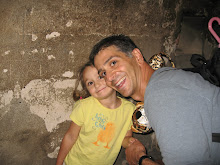“Freedom is the freedom to say that two plus two is four. If that is granted then all else follows.” —George Orwell, 1984
Galileo Galilei (1564-1642) is renowned as one of the founders of modern science. This year marks the four-hundredth anniversary of his discovery of the moons of Jupiter, a discovery that induced him to accept Copernicus’s sun-centered view of the solar system. What is less well known in the United States is that he was also a great writer. Nowadays we tend to divide the humanists from the scientists, but Galileo was both.
Dan Brown cast Galileo two-dimensionally as the first casualty of the war between science and religion. But Galileo saw no distinction between faith and reason either. He wrote that God composed two holy books, the Bible and Nature. When the two seem at odds, it’s only because people are reading the Bible incorrectly. The Bible, he wrote, uses metaphorical language that is easy to misinterpret; it ascribes a mouth and hands to God, for instance, a limitless Being who literally has neither.
Because it was the creation of God, Galileo held an equally expansive view of Nature. In one lyrical passage, he wrote a parable of the scientific method. A man wants to learn about Nature’s sounds. He begins with the singing of a bird, then the chirping of crickets, the vibrations of strings and the whistle of a reed. Each time the man thinks he’s categorized all the possible sounds, he discovers another way that Nature creates them. He concludes that he knows a few ways that Nature creates sounds, but there must be thousands of others that he has not experienced.
As a figure, Galileo exemplifies that the categories we find so natural—science v. literature, science v. faith—are artificial. He illustrates that, when done correctly, they all work in the service of the truth.
Perhaps the best example of Galileo serving the truth didn’t occur in reality. The legend has formed that, just after the Inquisition forced him to recant the heliocentric theory, he muttered “Eppur si muove” (“And yet, it moves”). The meaning of the statement is clear; the Inquisition could force one man to deny the truth, but it couldn’t actually change the truth. The statement doesn’t express defiance so much as faith: Nature’s truths are always available for someone—anyone—to see.
There is great comfort in the sentence “Eppur si muove.” George Orwell wrote of a frightening government that defined truth as whatever the party needed. Through torture, it makes Winston actually see that two fingers plus two more can equal five. Our society is unlike Orwell’s dystopia, but we are inundated with falsity, misinformation, half-truths and spin. From urban legends to political commentators to advertisements, it seems that the truth, like beauty, is in the eye of the beholder. The legend of Galileo reminds us to have faith. Despite some people’s cynical efforts, the truth remains unchanged, inviolate, and will someday be revealed.
Monday, March 8, 2010
Subscribe to:
Post Comments (Atom)




In addition to the points you've made, Galileo was quite a literary figure, as well. He frequently chose the dialogue, almost in the form of a play, to present his ideas on nature. He used all of the aspects of drama, protagonists, antagonists, conflict, complications, etc. He wrote in the vernacular of the average man so his works could be accessible to all literate people.
ReplyDeleteFor me Galileo was the epitome of the Renaissance Man.
Mike Francis
http://www.Mike-Francis.com/sm.htm
Thanks for commenting Mike. Yes, his literature is amazing! When you read it in Italian, you can see how good it is (it's really the first example of scientific writing in Italian; up till that point it had been in Latin).
ReplyDeleteAlso, his writings were an important part of his impact. He didn't simply make discoveries, but he wrote about them in an accessible way, and then inspired others to repeat his observations. So science became more of a movement than simply the discoveries of a few individuals.